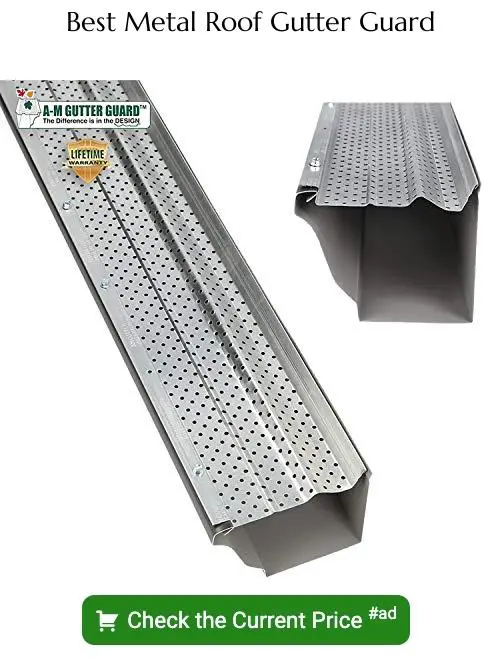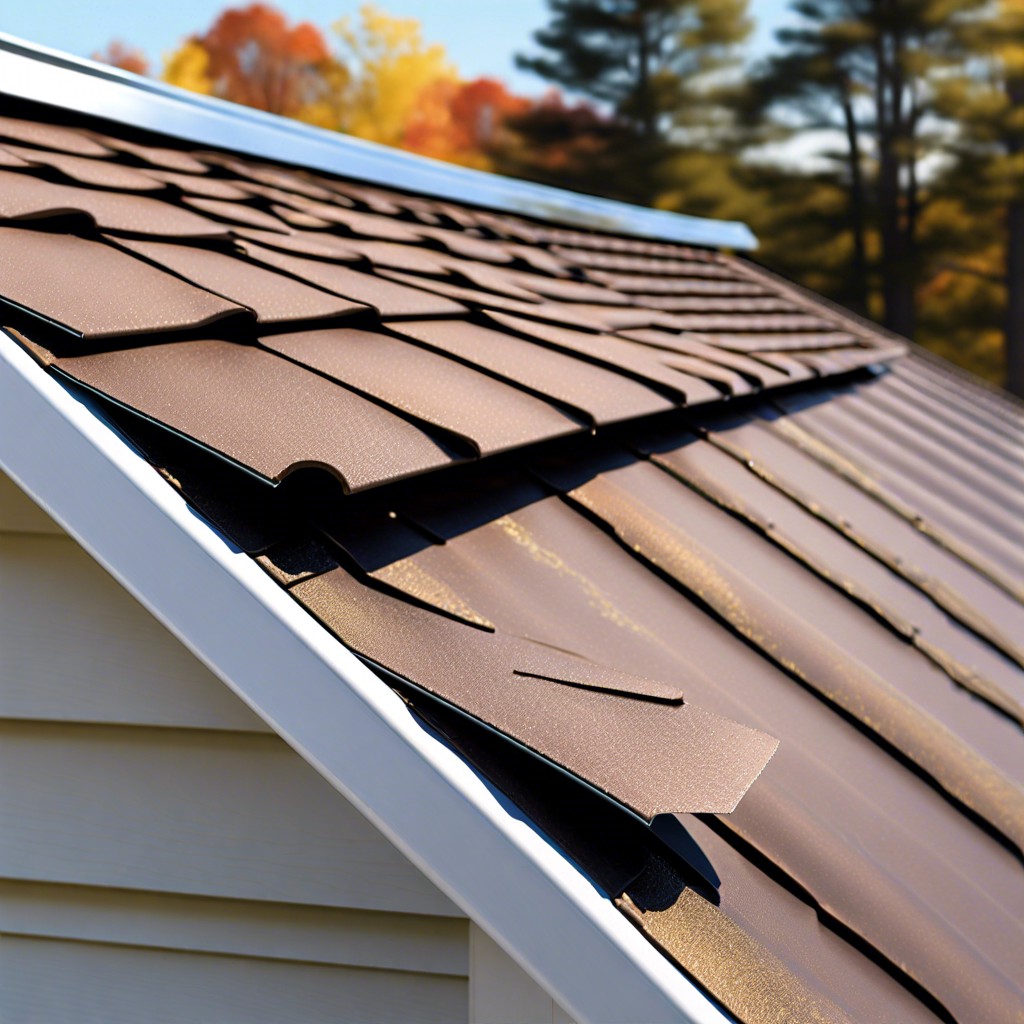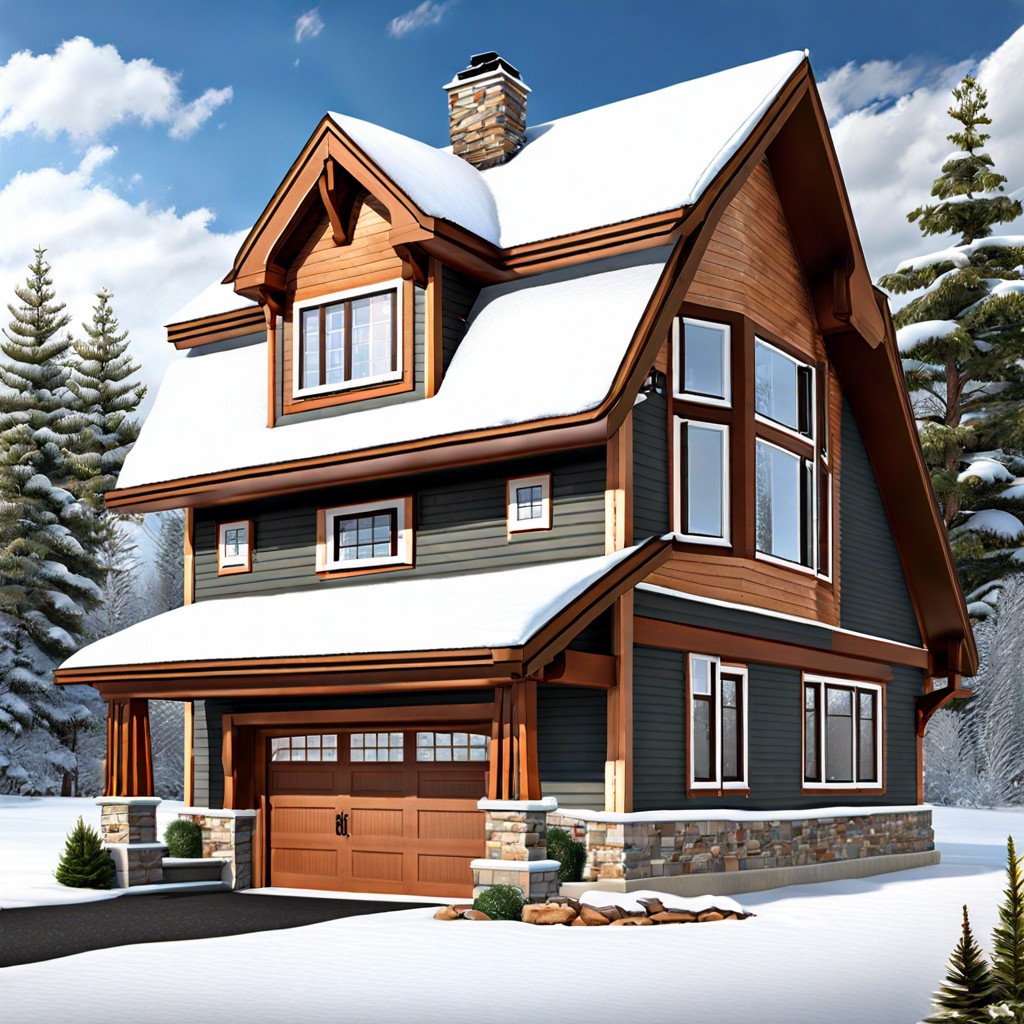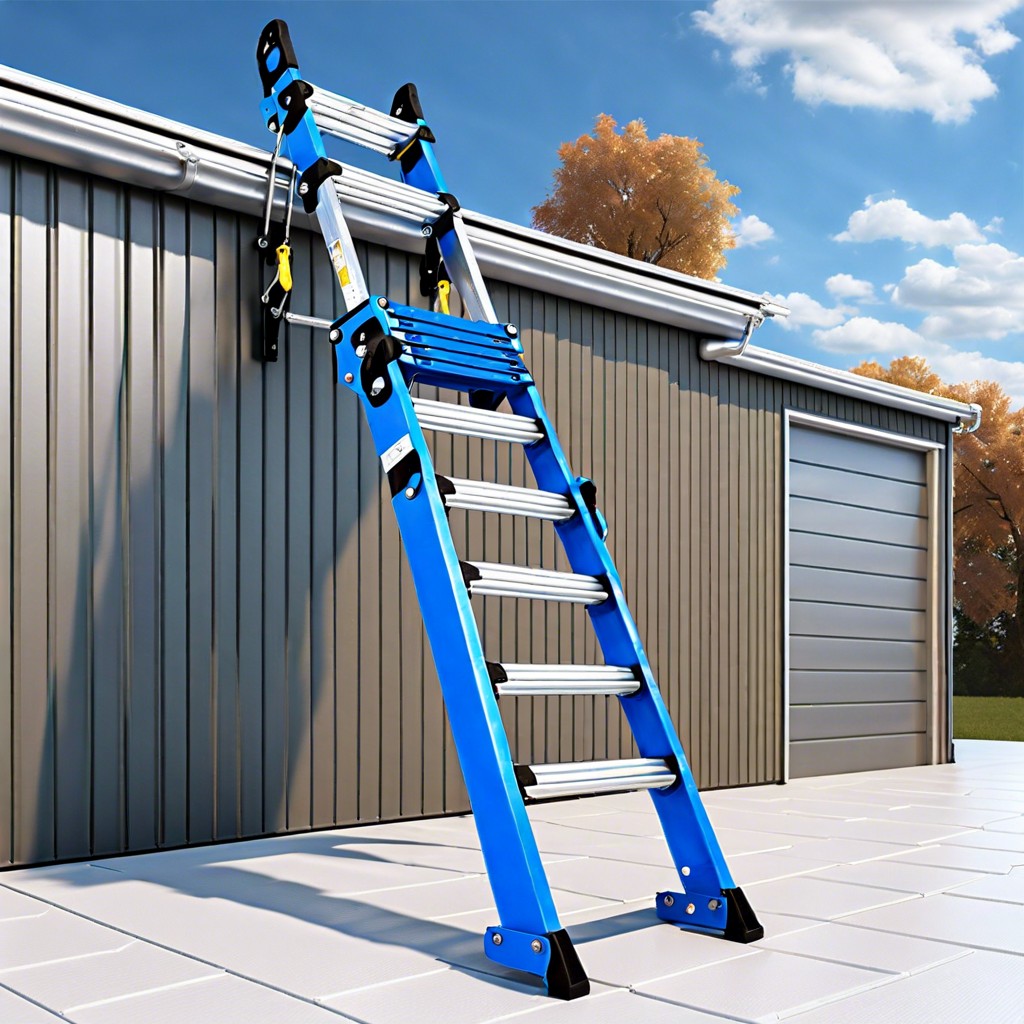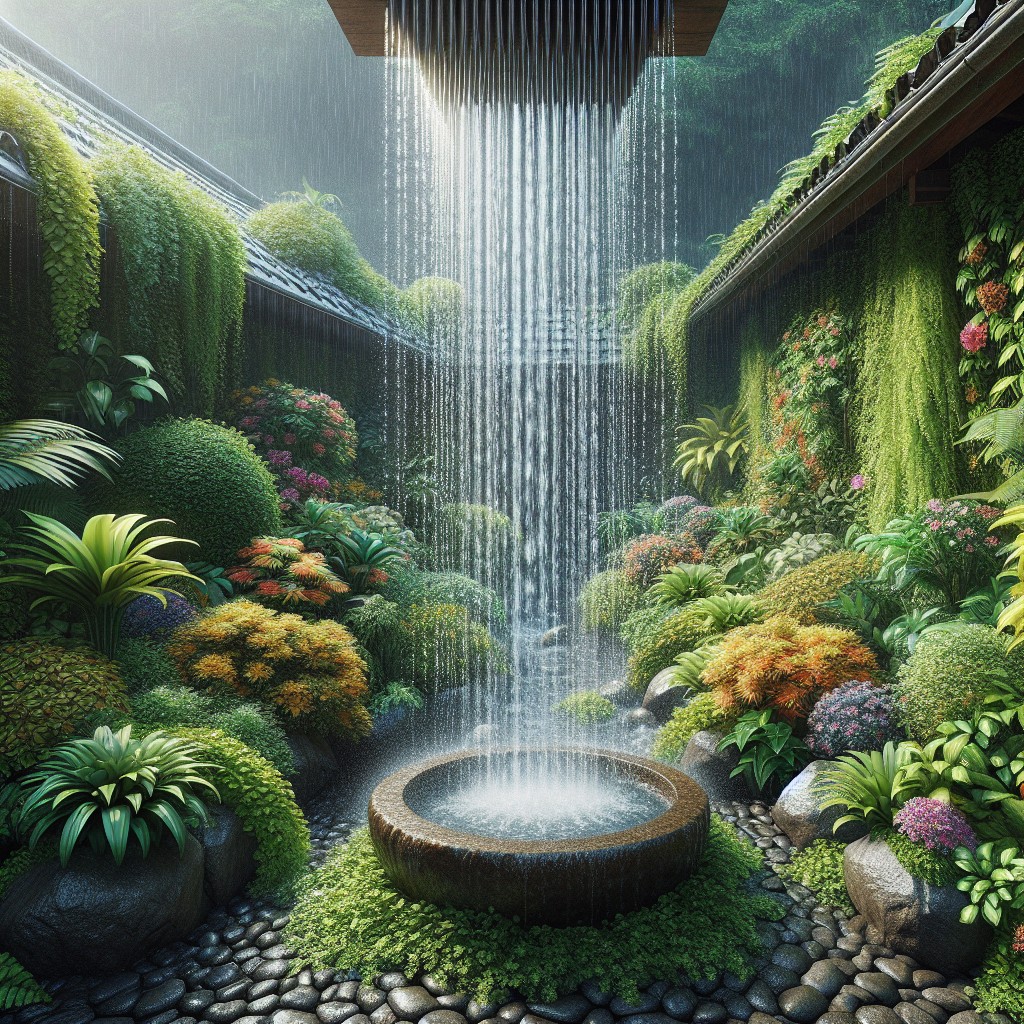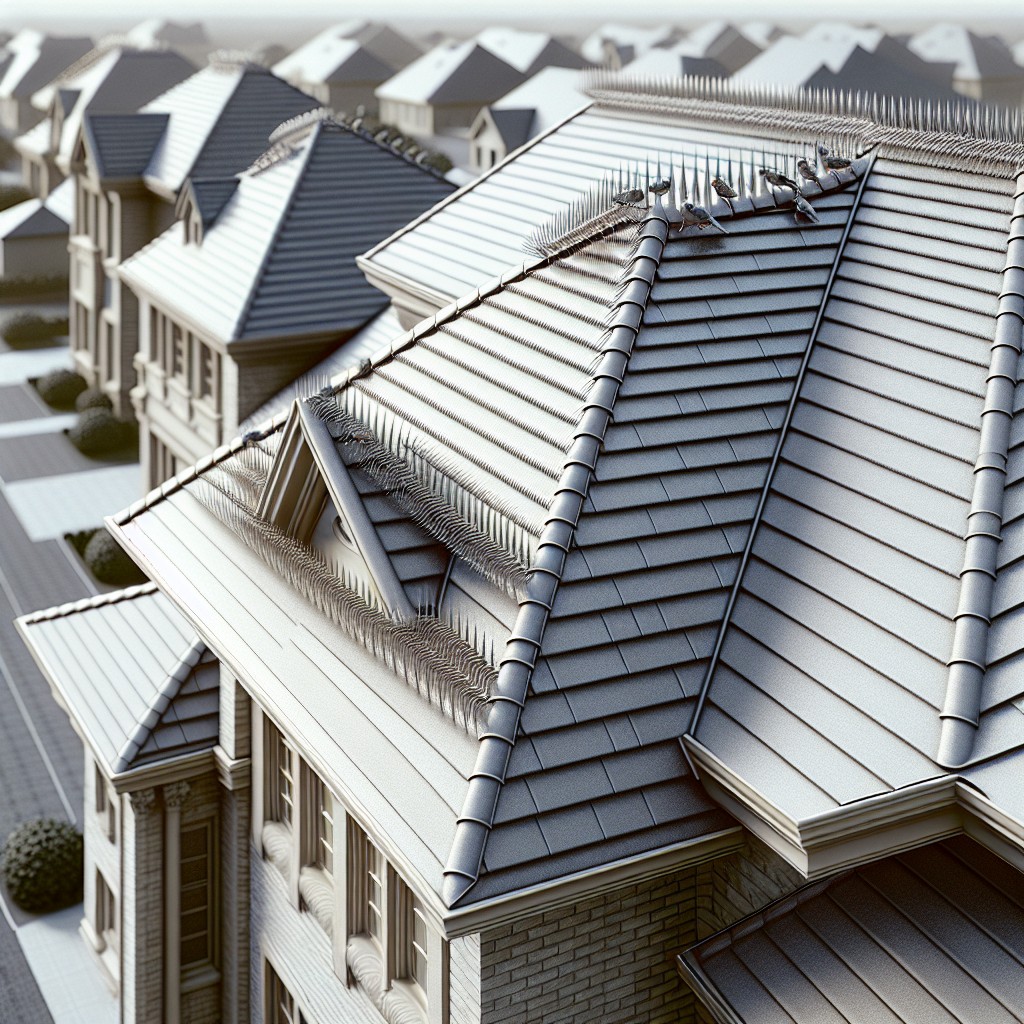Last updated on
Gutters play a critical role in the longevity of your metal roof because they steer water away, reducing potential damage caused by moisture build-up.
Key takeaways:
- Gutters on metal roofs channel water away from the foundation.
- Gutters prevent erosion, basement flooding, and siding damage.
- Proper gutter installation enhances metal roof longevity and function.
- K-style, half-round, and box gutters are common options for metal roofs.
- Gutters are necessary for water damage prevention and aesthetic maintenance.
Metal Roofs and Gutters: What You Need to Know
Understanding the relationship between metal roofs and gutters is crucial for maintaining a home’s integrity. Gutters serve to channel water away from the foundation, mitigating the risk of erosion and basement flooding. For metal roofs, the efficiency of this water diversion is even more pronounced due to the slick surface that hastens the flow of rainwater.
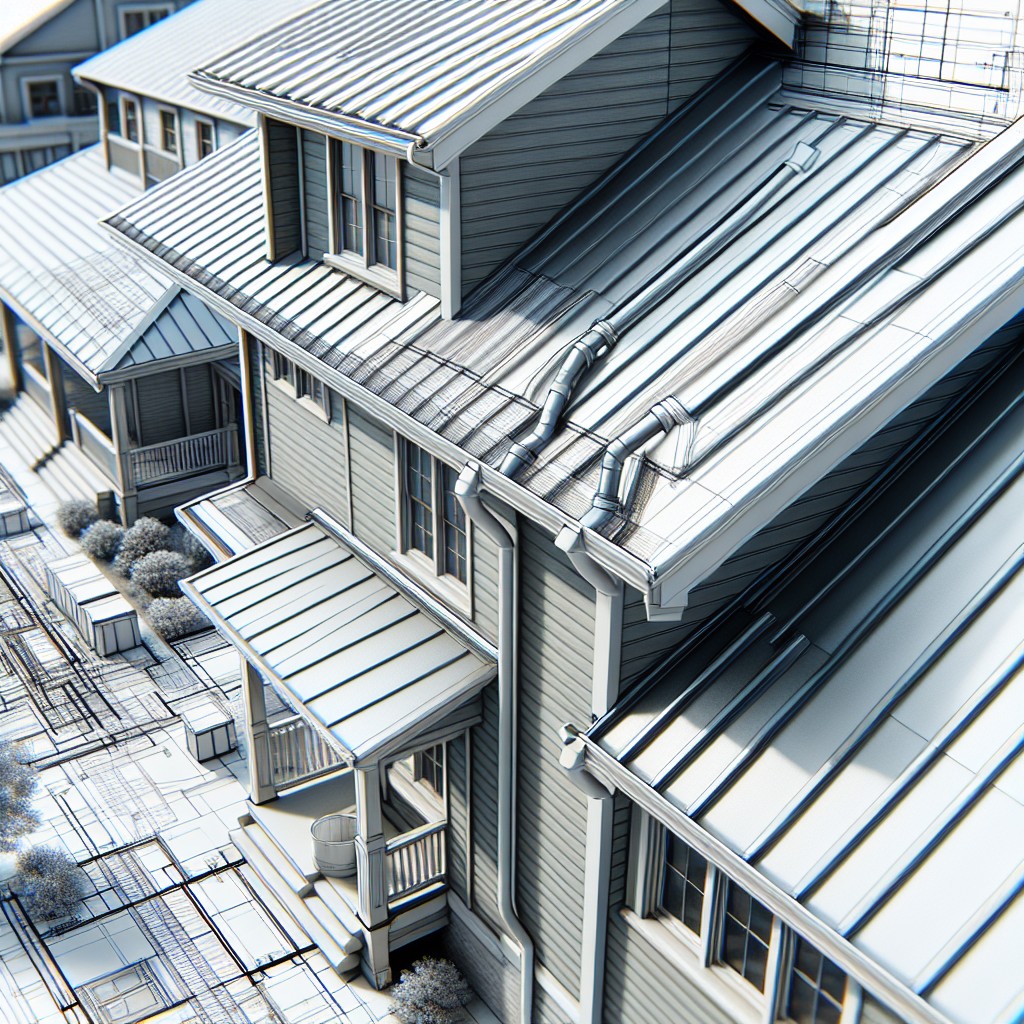
Metal’s durability means gutters don’t have to contend with debris from roofing materials, but they must be robust enough to handle the increased speed and volume of runoff. It’s also vital to consider the thermal movement of metal roofs; as they expand and contract, gutters and their attachments must accommodate this flexibility to avoid damage. Proper installation ensures that gutters are not only compatible with metal roofs but also enhance their longevity and functionality.
Do Metal Roofs Need Gutters?
Metal roofs are known for their durability and ability to efficiently shed water due to their sleek surface. However, despite their effectiveness in repelling water, the inclusion of gutters is beneficial for several reasons:
1. Water Management: Gutters channel water away from the foundation, preventing erosion, basement flooding, and landscape damage that can be caused by uncontrolled runoff.
2. Protecting Siding and Soil: Without gutters, water can cascade directly off the metal roof, potentially damaging siding and causing soil displacement around the home.
3. Ice Dams Prevention: In colder climates, properly installed gutters can help mitigate the formation of ice dams by allowing for the installation of heated gutter guards.
4. Longevity of Roofing System: By diverting water, gutters also contribute to the longevity of the roof’s underlayment and the structure’s overall integrity.
Overall, the decision to install gutters on a metal roof should be based on the specific conditions of the environment, including climate, the home’s design, and surrounding landscape.
Three Main Types of Gutters
When selecting gutters for your metal roof, you’ll encounter three primary styles:
K-Style Gutters: These are the most common type, named for their profile’s resemblance to the letter ‘K’ when viewed from the side. K-style gutters offer a decorative edge that mimics crown molding and a flat back that sits flush against the fascia board. They boast a high capacity for water diversion, making them a practical choice for regions with heavy rainfall.
Half-Round Gutters: As the name suggests, these have a half-circle design. Though they may carry less water than K-style, half-round gutters excel in quick clearing of debris and water, reducing clogs. Their smooth shape lends a traditional look and is often preferred for historic or older homes.
Box Gutters: These are larger, often used on commercial or very large residential roofs. With a boxy configuration, they can handle a substantial amount of water, but because of their size and the complexity of installation, they are less common on standard-sized homes.
Each style has its own installation methods and aesthetic impacts, so the choice often depends on the specific needs of your home and personal design preferences.
Why Is It Important To Have Gutters For Metal Roofs In Pittsburgh?
Pittsburgh’s climate, marked by substantial rainfall throughout the year, underscores the necessity for efficient water management systems on residential properties. Gutters play a crucial role in this regard, especially for homes with metal roofs. Here’s why:
1. Water Damage Prevention: Gutters channel rainwater away from the home’s foundation, safeguarding against erosion, basement flooding, and the compromised structural integrity that can result from constant water exposure.
2. Ice Dam Minimization: Metal roofs are known to shed snow quickly, which can lead to ice dam formation at the eaves. Functional gutters facilitate the flow of meltwater, reducing the risk of ice dams that can cause significant damage to both the roof and the home.
3. Soil Stabilization: Redirecting rainwater helps maintain soil stability around the home. Stable soil prevents foundation shifts that can cause cracking or buckling, preserving the longevity of the home.
4. Landscaping Protection: Well-placed gutters prevent runoff that can erode landscaping, keeping gardens and hardscaping intact after heavy rains.
5. Aesthetic Maintenance: By managing runoff, gutters reduce splashback that can stain metal siding or the lower sections of the roof, maintaining the home’s curb appeal.
For Pittsburgh residents, installing gutters on a metal roof is an investment in the durability and resilience of their property, especially given the local weather’s propensity for precipitation.
Installing Gutters On Metal Roofs
Proper installation of gutters on metal roofs is crucial to ensure water is effectively diverted away from the building’s foundation. Here’s an outline of critical points to consider:
1. Professional Assessment:
A professional assessment by a roofing contractor should be the initial step. They will determine the best type and size of gutter system for the metal roof based on the local climate and the roof’s pitch.
2. Choosing the Right Materials:
Materials need to be compatible with the metal roof to prevent galvanic corrosion. Typically, aluminum and vinyl gutters are popular due to their durability and minimal maintenance needs.
3. Bracket and Hanger Placement:
Gutter brackets or hangers should be secured into the fascia board and not the metal roofing to avoid potential leaks. Strategic spacing ensures they can support the weight of the gutters, even when full of water or debris.
4. Ensuring Adequate Slope:
Gutters must have a slight slope towards downspouts, about 1/2 inch for every 10 feet, to facilitate water flow and prevent pooling.
5. Adding Flashing:
Flashing under the shingles and over the back edge of the gutter can prevent water from seeping behind the gutters—crucial for safeguarding the roof’s edge.
6. Downspout Placement:
Downspouts should be situated at every 40 feet of gutter, at minimum, to efficiently handle runoff. They must direct water away from the foundation and not onto lower roof sections.
7. Sealant Application:
Seams and joints should be sealed with a high-quality sealant formulated for use with metal and the gutter material to prevent leaks.
8. Expansion and Contraction Consideration:
Accommodate for the expansion and contraction of metal in varying temperatures by ensuring that gutters are not installed too tightly against the metal roof.
By focusing on these points during installation, gutter systems can work in harmony with metal roofs, maximizing their efficiency and longevity.
Why Do Homes Need Gutters Anyway?
Gutters perform the essential function of channeling water away from your home’s foundation. The absence of gutters may lead to a host of problems, including:
- Soil erosion: Without direction, rainwater can erode the soil around the foundation, which can lead to unstable ground and affect the integrity of the house’s structure.
- Basement flooding: Water pooling around the base can seep into basements, causing flooding, mold, and mildew issues which can be costly to remediate.
- Siding damage: Water can streak down siding materials, leading to water damage, staining, and potentially rot, especially on wood-based sidings.
- Landscape degradation: Uncontrolled runoff can ruin landscaping, wash away gardens, and damage lawns.
Gutters serve to protect your home by preventing these issues, ensuring your home stays dry and your landscaping intact.
What Are the Best Gutters for Metal Roofs?
Selecting the right gutters for metal roofs involves considering material compatibility, durability, and functionality. Aluminum gutters are a popular choice due to their rust-resistant properties and lightweight nature, which pairs well with metal roofing. They also come in various colors, allowing for aesthetic integration with your home’s design.
Copper gutters stand out for their longevity and distinctive appearance that can add to the appeal of a house. While costlier, they are highly durable and develop a patina over time that protects against corrosion. This makes them an excellent long-term investment for metal roofs.
For those seeking a cost-effective yet durable solution, galvanized steel gutters may suffice. They are sturdier than aluminum options and can withstand heavy snow and ice, which is crucial in areas with harsh weather conditions. However, they are prone to rust over time if the coating gets damaged.
Seamless gutters are a modern advancement, offering the advantage of being made on-site to fit your roof perfectly, which minimizes leaks. These can be made from various materials, but aluminum is the most common, combining the benefits of seamless construction with the lightweight and rustproof qualities of the metal.
When evaluating gutter systems, it’s imperative to consider not only the material but also the shape and size that best suit your roof’s water collection and diversion needs. Your choice should effectively manage the water runoff from your metal roof, protecting your home from water damage.
Problems With Gutters On Metal Roofs
Metal roofs can pose specific challenges for gutter systems, largely due to their smooth, slippery surface and the speed at which water runs off.
Expansion and Contraction: Metal roofs expand and contract with temperature changes. If gutters are not properly installed to accommodate this movement, it can lead to detachment or warping of the gutter system.
Debris Accumulation: The valleys on metal roofs are prone to collecting leaves, twigs, and other debris, which can clog gutters and downspouts, leading to overflow and potential water damage.
Noise: Rain hitting a metal roof can be noisy and when water flows into gutters, this noise can be amplified if not properly insulated or secured.
Compatibility: Standard gutters may not be compatible with all metal roofing systems. Specialized hangers or brackets may be required to ensure secure attachment without penetrating the metal roof, which could cause leaks.
Snow and Ice: In colder climates, the smooth surface of metal roofs can allow snow and ice to slide off in large sheets, potentially damaging gutters if they are not reinforced or equipped with snow guards.
Installation Errors: Improper installation can lead to performance issues. Gutters must have the correct pitch and be securely attached to handle the high flow rate of water off a metal roof.
Overlooking these challenges can lead to poor gutter performance, potential water damage to the property, and added maintenance costs. It is crucial to address each problem with the appropriate solutions tailored to metal roofing systems.
When Metal Roofs Need Gutters
The necessity of gutters with metal roofing is influenced by several factors:
Climate: In areas prone to heavy rainfall or snow, gutters are crucial for directing water away from the building’s foundation, preventing erosion, and mitigating the risk of water damage.
House Design: Homes with a broad overhang may not need gutters as the overhang can naturally keep water away from the foundation. Conversely, less overhang means gutters are more necessary to manage runoff.
Surrounding Landscape: If the ground around a house slopes away, it may naturally divert water from the foundation, potentially lessening the need for gutters. Flat terrain requires a good gutter system to handle water accumulation.
Local Building Codes: Some municipalities have specific requirements regarding water diversion, making gutter installation on metal roofs a compliance issue.
Leaf Debris: Homes surrounded by trees may need a more robust gutter system to prevent blockages from leaves and twigs.
Snow and Ice: In wintry climates, without gutters, snowmelt can refreeze at overhangs, creating ice dams. Gutters paired with heating elements can prevent this.
By considering these conditions, homeowners can determine how crucial gutters are for their particular roof and environmental situation.
Ready to Install Gutters for Your Metal Roof?
Before proceeding with the installation, ensure you have selected appropriate gutters for your specific metal roof configuration. Assess the roof’s pitch, the expected level of precipitation, and the architectural style to decide on the gutter material and size that will function best.
Next, consider whether you’ll need professional assistance or if you’ll manage a DIY installation. Experts can navigate the complexities that come with varying roof designs, ensuring secure attachment and proper drainage.
Map out the positioning of downspouts for optimal water diversion, aiming for less populated areas of your landscape to minimize water damage. It’s also crucial to account for the length of your overhang; extending gutters beyond the drip edge can prevent water from sneaking behind them.
Be prepared with the right tools, such as a ladder, screws, sealant, and perhaps a hacksaw for the sections. Bear in mind that safety is paramount during installation, so appropriate gear and adherence to safety measures are non-negotiable.
Finally, familiarize yourself with local codes and regulations to ensure your installation aligns with any requirements. This preemptive step will save you from future headaches and ensure your gutter system is not only efficient but also compliant.
FAQ
Can I put gutters on a metal roof?
Yes, you can install gutters on a metal roof, as it aids in preventing water-related problems and guards the home against potential damage.
What is the best gutter system for a metal roof?
The best gutter system for a metal roof is a micro-mesh gutter guard, but it is vital to ensure, through customer reviews, that it doesn’t cause spillover during heavy rain if the roof is located in a rainy area.
How to install gutters on a metal roof with no fascia board?
To install gutters on a metal roof with no fascia board, you should use roof straps that attach to the hidden hanger inside the gutter and secure directly into the roof.
Will snow sliding off a metal roof damage gutters?
Yes, snow sliding off a metal roof can cause damage to gutters.
What are the potential risks if gutters aren’t installed properly on a metal roof?
Improperly installed gutters on a metal roof can lead to water damage, foundation problems, landscape erosion, roof damage, and potential basement flooding.
What materials are recommended for gutters to complement a metal roof?
Copper, steel, and aluminum are recommendable materials for gutters that perfectly complement a metal roof.
How often should gutters attached to a metal roof be cleaned and maintained?
Gutters attached to a metal roof should be cleaned and maintained at least twice a year, typically in the spring and fall.
